The man at the checkpoint seems very relaxed. Too relaxed, perhaps. “You’re good to go,” he says. “Don’t stop at the lava.”
I call after him – “What, I’m sorry?” – but it’s too late, he’s on to the next car, so, sure enough, I drive on and within a few minutes I find myself scrambling over a temporary track worn over rubble that is still warm
The lava flow is bitumen black and smoking, piled high with sharp irregular shapes like a field full of burnt cars. It smelled the way you’d imagine it would smell: like burning plastic with a hint of rotten egg. And then I’m through, come into a strange and beautiful landscape: older, settled, and smothered in soft-gray moss.
At Grindavík, I turn inland, past a yellow banana digger clearing the edges of the embankments thrown up to protect the evacuated town from floods of superheated rocks that have invaded the town’s borders.
My destination: the Blue Lagoon, Iceland’s top tourist attraction. The geothermal spa is renowned for the luminosity of its waters, the skin-soothing qualities of its mineral-rich mud, and its unique Icelandic brand of contemporary luxury. More recently, however, it has played a central role in the region’s theater of cruelty.
The balmy temperature is owed to the Svartsengi power station next door, which pumps boiling water from underground reservoirs into the lagoon after being fed through a heat exchanger. Its high mineral content gives it antibacterial properties, eliminating the need for chlorine.
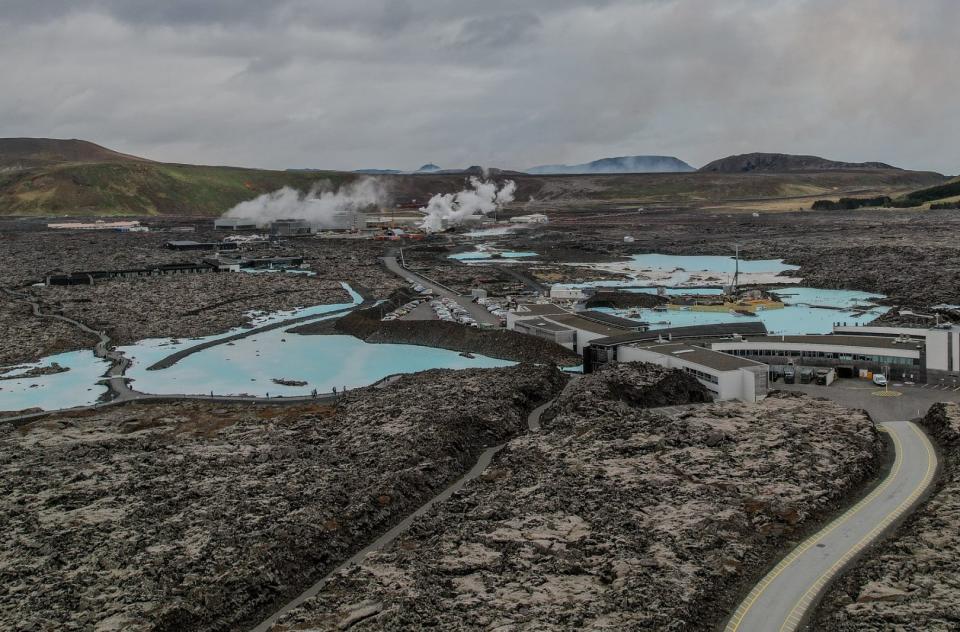
Iceland’s location at the boundary between separating tectonic plates creates its wealth of geothermal power, but also leaves the region vulnerable to natural disasters. Since 2021, the Reykjanes peninsula has experienced a series of dramatic volcanic events. Unlike the infamous eruptions of Eyjafjallajökull in 2010, which disrupted air travel across Europe, recent eruptions produced very little ash. But lava flows directly threaten the town of Grindavík, the power plant, the Blue Lagoon, and the main access road to all three – Route 43, which was swallowed last weekend by volcanic flows for the third time. The footage shows a rock wall plunging slowly but steadily forward as police, overwhelmed by its scale, look on helplessly.
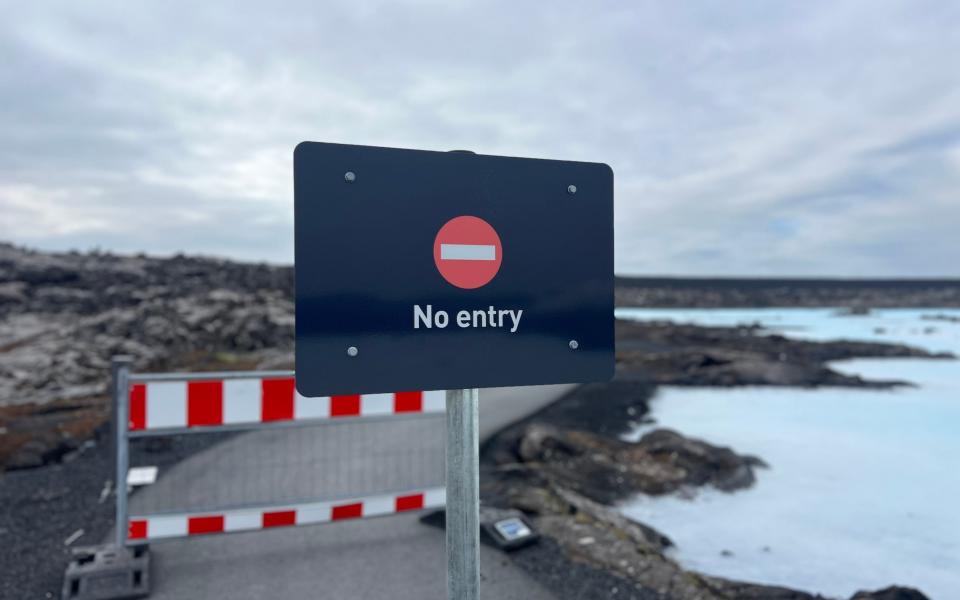

Still, the Blue Lagoon has been remarkably resilient, reopening on Tuesday thanks to the new access route carved through that tobacco field to the west, just three days later.
When I arrived in the middle of the afternoon, I found the car park perhaps a third full, noisy with construction machinery strengthening the protective fence that had been placed around the facility. It was a schoolboy’s dream: dumper trunks running back and forth, loaded with boulders; diggers busily plowed at black earthworks.
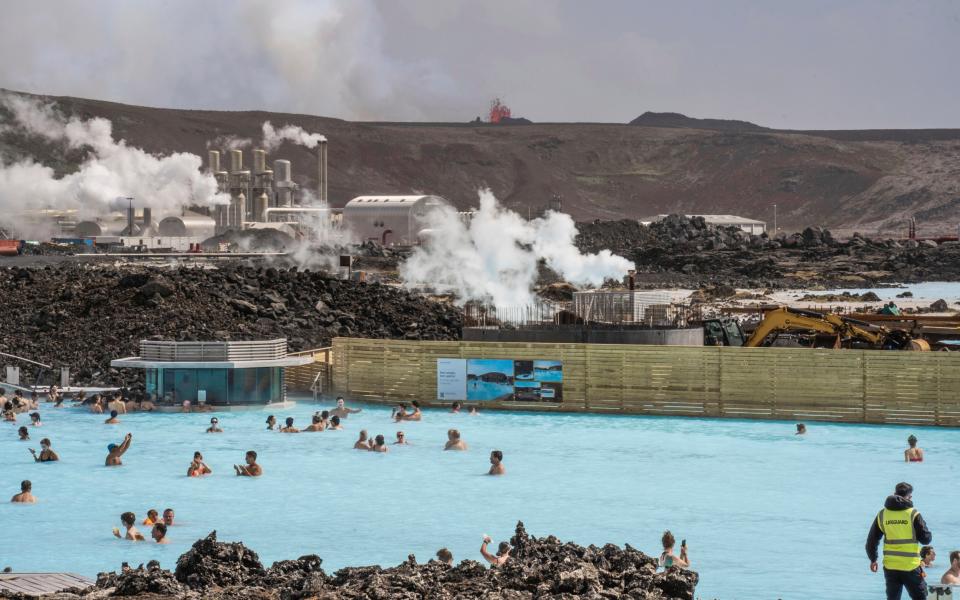

Michelle Taylor, a tourist from Brisbane, was returning to her vehicle after relaxing in the pools for several hours. “We’re really happy to be here, honestly,” she said. “There are fewer people here than usual. It is quiet. But, for us, that’s a good thing. It was beautiful.” The hellish views on the ride only added to her experience, she said: “We couldn’t believe this was allowed. It was worth the cost of entry just to drive the road in.”
Tamara Ananic, a smiling staff member, stood waiting to greet new arrivals. “It was tough, honestly,” she admitted. “You never know when something might happen.” They have been evacuated three times recently because of eruptions, she said. It was a “stressful” time, but employees would continue to be paid as usual, even when the facilities were closed.
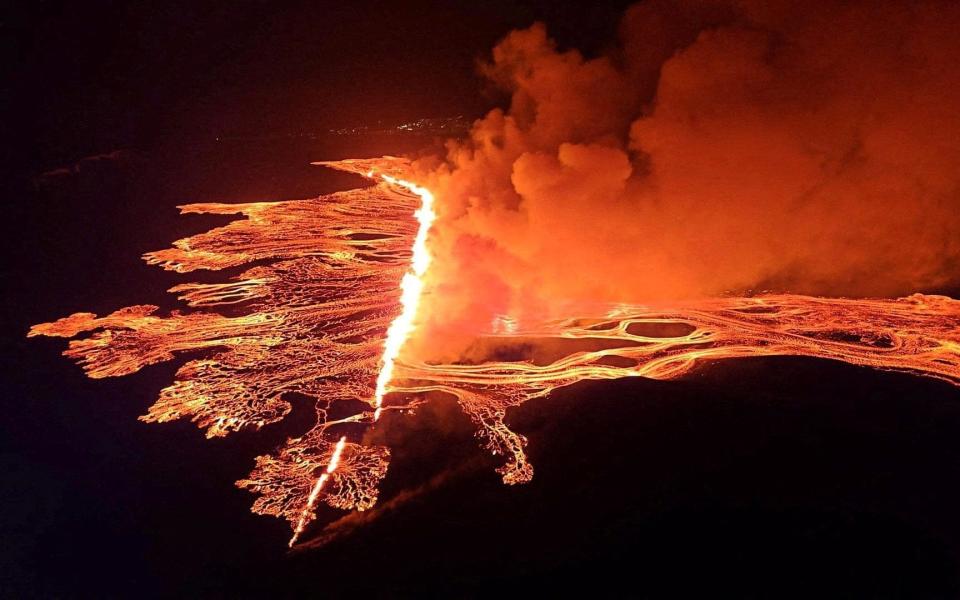

The Blue Lagoon opened in 1992 and quickly became one of the most recognized resorts in the world. By 2019, it was valued at 50 billion ISK (£280m)—although recent events have undoubtedly been expensive; Icelandic newspaper Morgunblaðið Last winter’s seven-week volcano closure is estimated to have cost over 4 billion ISK (£22m).
Inside the complex itself, the mood was calm. The usual scrum of the ticket line was thinned to a large number of guests. The dressing rooms felt almost too quiet. Outside, the famous ethereal pools billowed with mist; dark figures bobbed in electric blue waters, some smeared with chalky white face masks or clutching plastic cups of beer.
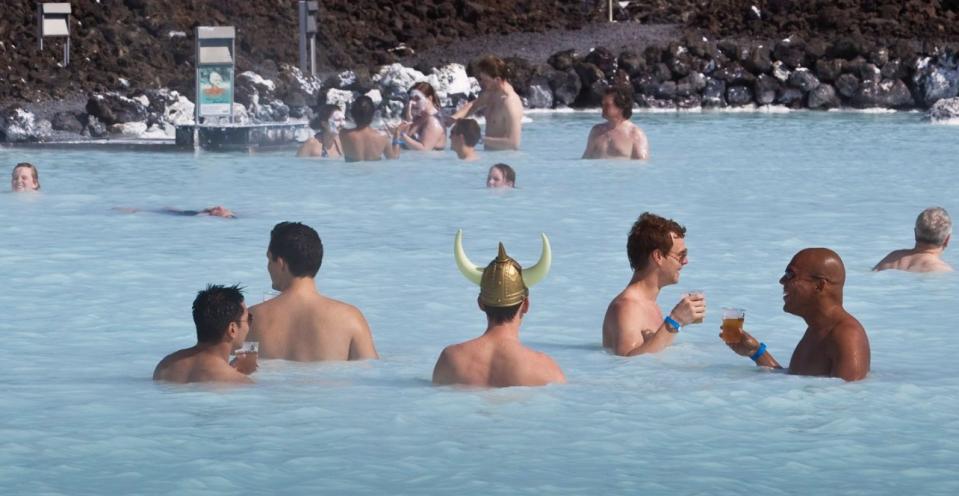

From the pool-side bar, guests could spy through a gap in the wall bright smoke rising in a quivering plume from the one remaining active flank – just 3km away – which continued to simmer and belch.
A few days earlier, the volcano had put on a spectacular show, spewing molten, flame-red magma high into the sky. Guests Pam Field and Gwen Gregory, from Oregon and Arkansas, were there to see it. “On Fridays, we could see him over the walls, teasing and flaring fairly regularly,” says Pam. It all seemed a little too close for comfort, she thought, “and okay, it closed the next day.”
Early on June 8, when it became clear that the flow would overcome the road and deal with the complex’s protective embankment, day visitors were told to stay away, and guests at the Blue Lagoon hotels were allowed to stay until 11am.
Still, the two women decided to return as soon as she opened her doors. The company’s detailed evacuation plans, published online, reassured them and made them feel comfortable with the risk. “They’re monitoring seismic activity, air quality, lava flows,” Gwen said. “They have good safety protocols.”
Outside, the air moves with heat over newly formed lands. Inside, €86 tasting menus are served, champagne is poured, and – behind closed doors – anxious eyes check and recheck the latest seismic updates.
How to do it
Day passes for the Blue Lagoon cost ISK14,490 (£81.70). look bluelagoon.com for details.